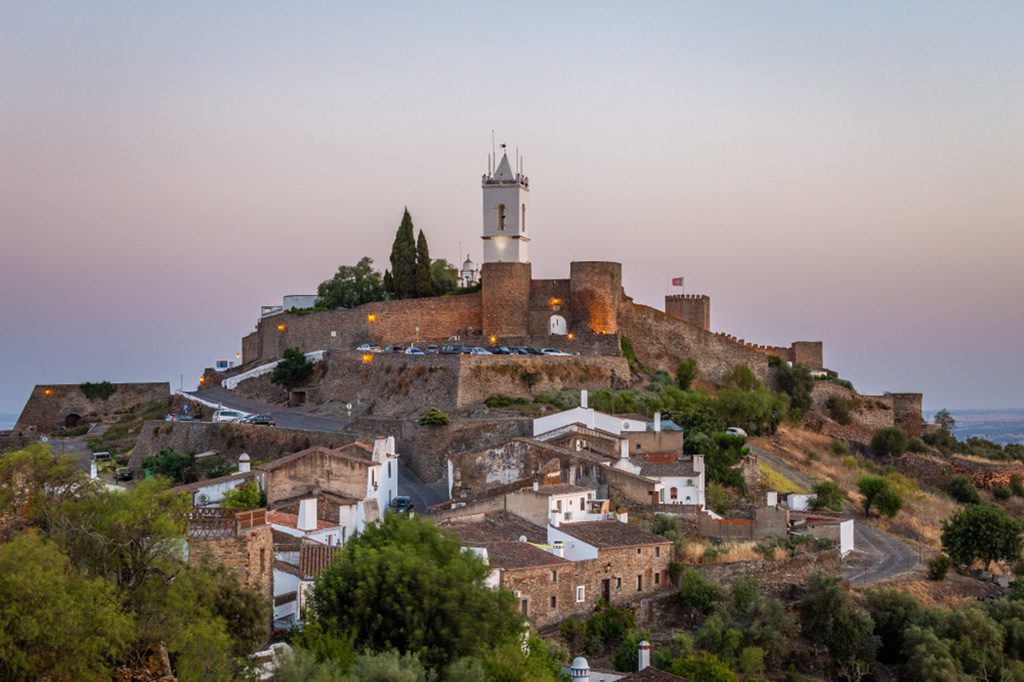Portugal, a country that played a significant role in the New World Discovery Age, is now a land of discovery in its own right, with breathtaking landscapes that gradually reveal medieval castles, world-class golf courses, golden-sand beaches, cobblestone villages dominated by beautiful churches, and captivating cities pulsing with rich culture, fabulous food, and buzzing nightlife. Portugal, a country in southern Europe on the western coast of the Iberian Peninsula, has an enviable climate, low prices for tourists, and a wealth of remarkable sights and experiences, making it one of the continent’s most popular destinations.
Lisbon, the country’s capital, is a must-see because of its stunning medieval architecture, Europe’s biggest aquarium, delectable food, and unique fado music. Porto’s claim to fame is, of course, its wine. Aveiro’s scenic canals and bridges draw comparisons to Venice, while Obidos’s romantic charm and the nearby Praia D’el Rey golf complex make it a popular destination. Pena’s Palace in Sintra is a spectacular castle, while both Coimbra and Evora have several historical treasures to explore.
Mountains and vineyards in the north, flat farmland and medieval villages in the central area, and the beautiful beaches of the Algarve in the south all contribute to Portugal’s richly diversified landscape. The Azores and Madeira archipelagos, both located in the Atlantic Ocean and both belonging to Portugal, are renowned for their beautiful landscapes and flower gardens.
Many of Portugal’s smaller towns have been preserved mostly unchanged since the Middle Ages. The locals still use traditional Alentejan cooking techniques and donkeys as means of transport, and port wine is being made the way it has been for centuries. Since these European time capsules don’t see a lot of visitors, you can count on having a genuine, though gradual, encounter with history. A tour of Portugal’s most picturesque villages:
14. Almeida
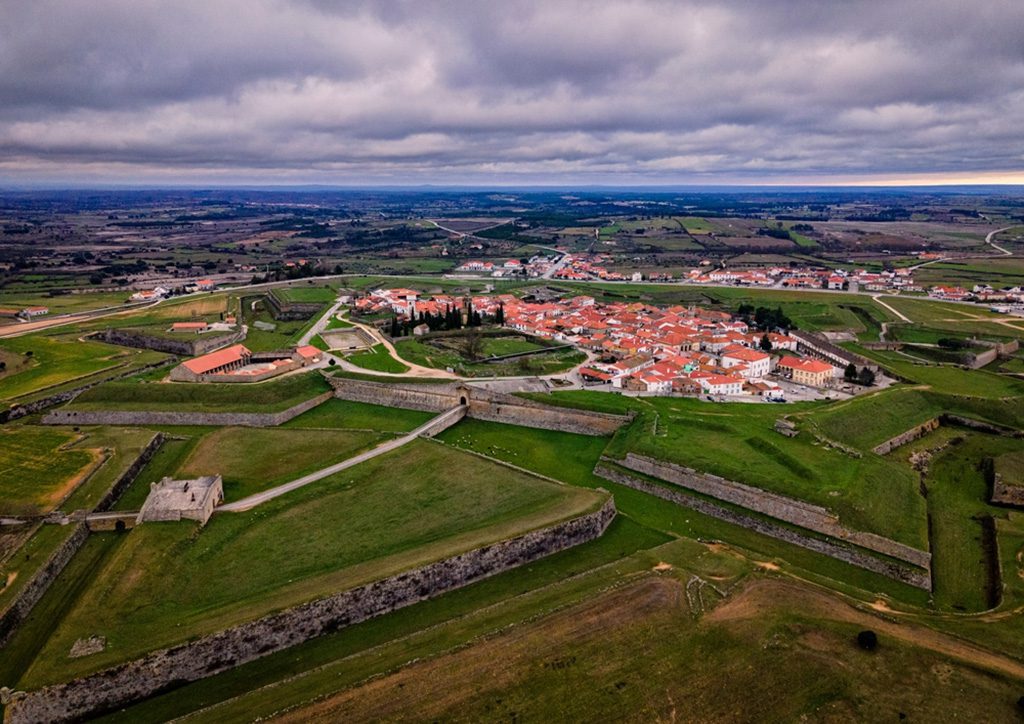
A drone view of the impressive fortress in Almeida, Portugal. Image source: Nuno Ferrinha/Shutterstock.com
Located near Portugal’s central and eastern borders, this small town is home to less than 2,000 inhabitants. Almeida may be small, but it guards a crucial junction on the route from Spain. Even though a fortunate round hit the gunpowder stockpile in the Almeida Castle during the Peninsular War in 1810, the castle is still standing. 500 defenders were murdered, and half the town was destroyed when the bomb went off. Because protecting the intersection is so vital to the local economy, Almeida has preserved the intriguing Museu Histórico Militar de Almeida, which is housed in a maze of tunnels underneath the town.
13. Sortelha
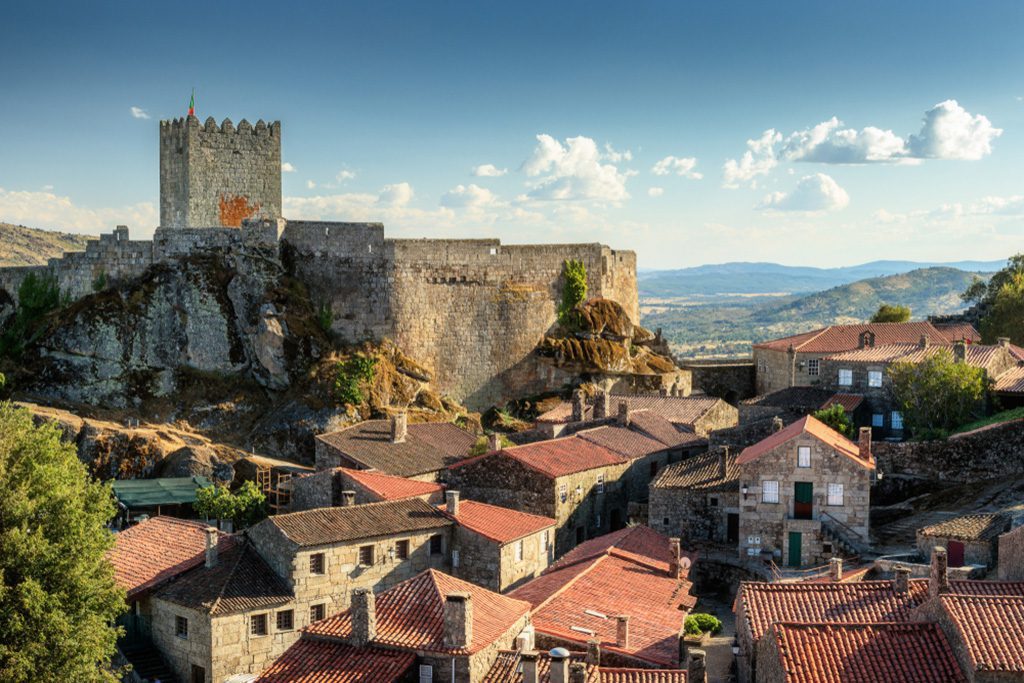
The historic village of Sortelha and its castle in Portugal. Image source: Pedro Fonseca/Shutterstock.com
Visitors to Sortelha are welcome to explore the town’s historic castle at their leisure. There won’t be any lines for tickets or assistance from staff or security guards, and there won’t be any walls or railings either. You are free to explore the tower of the castle at your own discretion. Sortelha is well worth the effort required to reach its lofty perch. After making your way down from the battle-scarred castle, you can take a leaflet-guided tour of the nearby village. Festivals featuring reenactors from the Middle Ages are commonplace in Sortelha because of the town’s authenticity to the period.
12. Elvas

The Amoreira Aqueduct in the town of Elvas, Portugal. Image source: alexilena/Shutterstock.com
Elvas, another key Portuguese-Spanish crossing, is protected by a star-shaped fort. When attacking a square fortress, attackers might concentrate their efforts on the corners, where there are fewer guards to stop them. However, arrows can come from any angle, making a star-shaped defense far more difficult to breach. Explore the fort’s southern end with enthusiastic guides and learn about its history as you go. Ancient aqueducts are still in operation to provide the city with fresh water, and the town’s cathedral in the Praca de Republica has been well preserved. Elvas is a gem-filled town that receives fewer visitors than other Portuguese towns, so you’ll have to take your time exploring at the pace of the inhabitants.
11. Ericeira
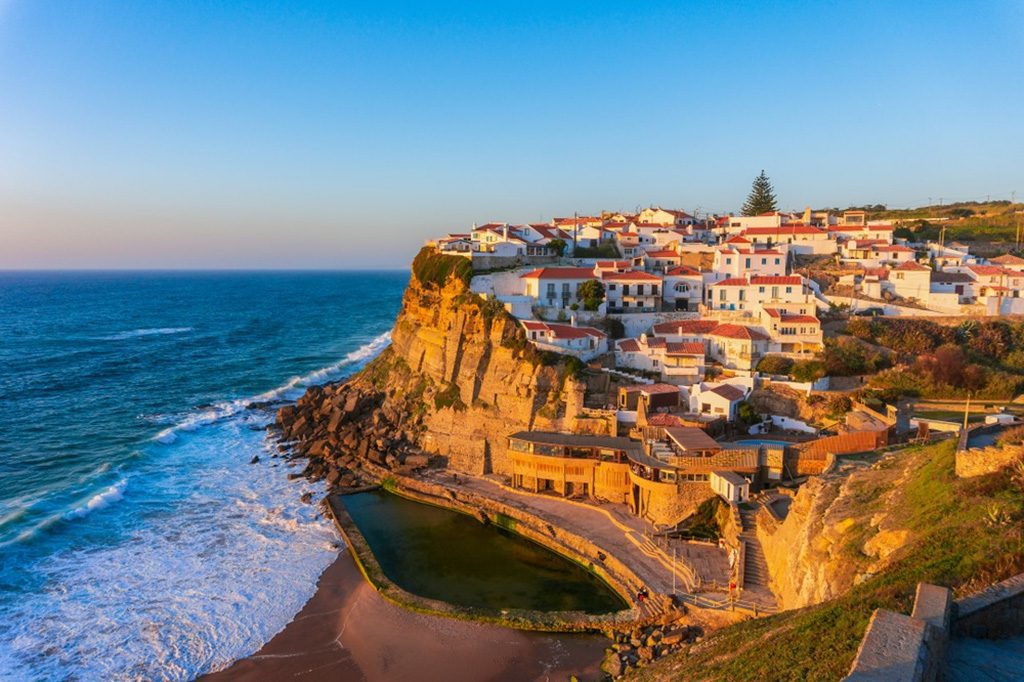
Azenhas do Mar, a picturesque village on the cliffs of Portugal. Image source: Leonid Sorokin/Shutterstock.com
Ericeira, on Portugal’s mid-Atlantic coast, is a popular surfing destination due to its powerful ocean waves. Visitors come to the town on the weekends because of the breathtaking views it offers from a cliff high above the clear blue waters. The town also attracts gourmands because of its delicious seafood. Praca de Republica is a lively park in the center of town that is flanked by bars, shops, and seafood restaurants. The land to the south and west of this beach haven is seeing rapid development.
10. Castelo Rodrigo
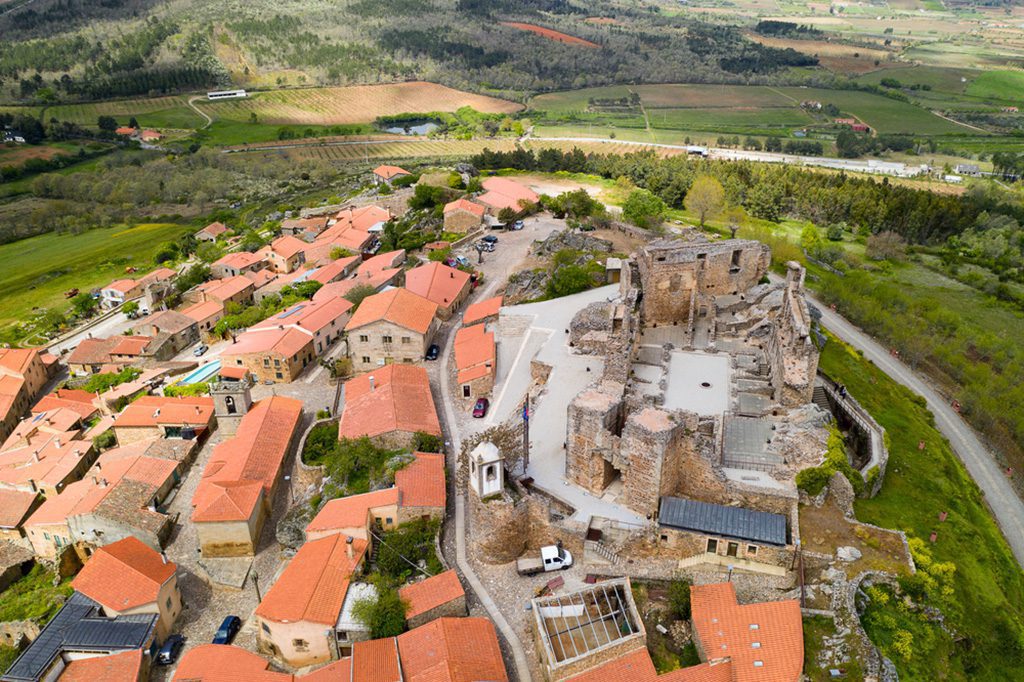
A drone aerial view of Castelo Rodrigo village in Portugal. Image source: LuisPinaPhotography/Shutterstock.com
This small town in Portugal’s northeast has a rich and fascinating past. The castle has the inverted Portuguese coat of arms and bears the wounds of a long siege. In accordance with D. João’s directives, the town is obligated to maintain its status indefinitely. D. João, Portugal’s long-defunct king. They were issued in 1385, after D.João At the Battle of Aljubarrota, D. João triumphed over the Castelo Rodrigo lords. Castelo Rodrigo took the side of the newly wedded king of Castile, D. João Queen Beatriz was the only child of King D. Fernando of Portugal, and he supported her right to the kingdom after his death. This formerly quiet town has undergone extensive restoration work, and the result is a picturesque center that expands out from the historic castle.
9. Lamego
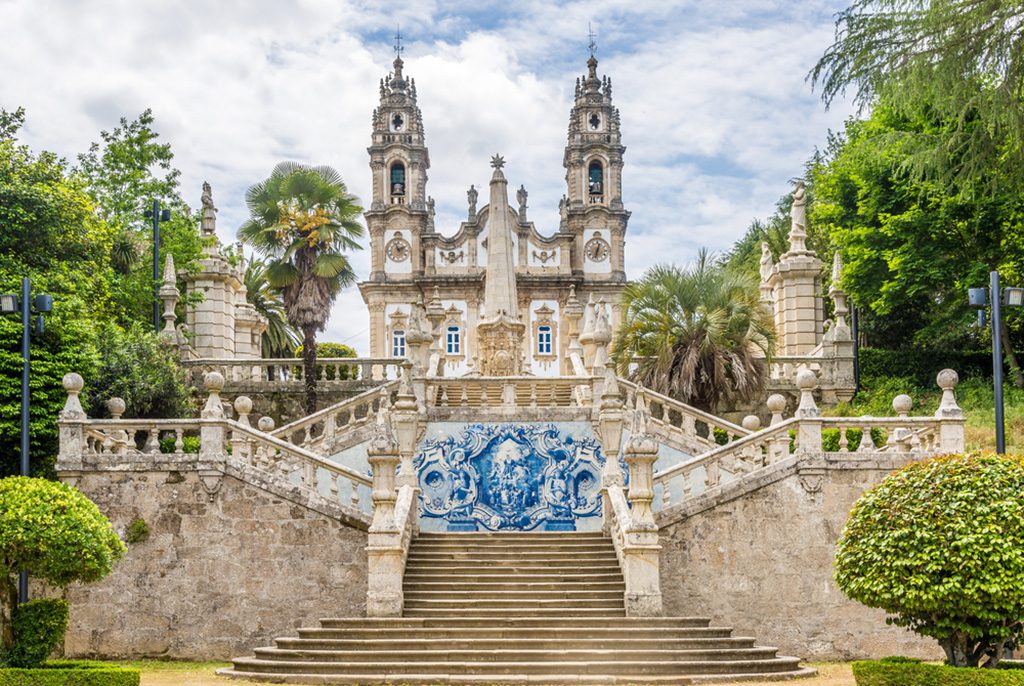
A beautifully decorated stairway in Lamego, Portugal. Image source: milosk50/Shutterstock.com
Lamego is a time machine that will take you back to the past. This town in north-central Portugal is surrounded by the hills of the port wine region, and it is just pouring with Baroque flavor. Most visitors are drawn by the stunning Igreja de Nossa Senhora dos Remédios, located at the top of a baroque staircase that has stood the test of time. The church’s extravagant ornateness and the fact that its granite sanctuary has been kept in such good condition are a visual feast. The 686 stairs wind through the forests until emerging at the base of the unparalleled sanctuary, from where one can see in every direction. While there, you can walk off some of the region’s delicious port wine.
8. Nazare
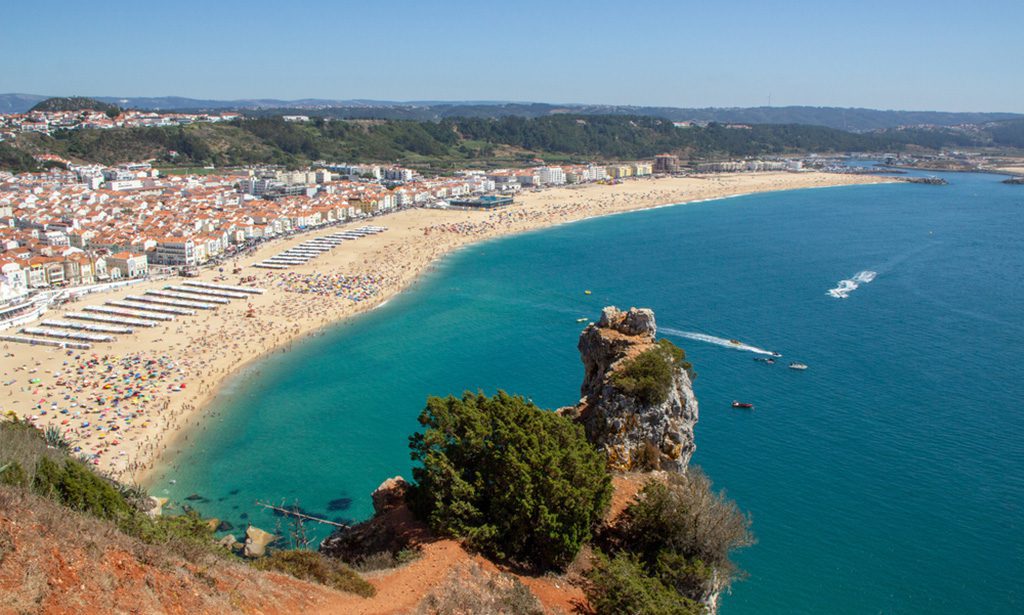
A beautiful beach with mild climate and natural beauty in Portugal. Image source: Frank M. Alvarez/Shutterstock.com
Nazare is home to some of Portugal’s best beaches, and if you ask the locals, they’ll gladly attest to that fact. Big wave surfers are drawn to the Atlantic because of its active waters and the long, sandy beaches that line the coast. Watch the biggest net fishing boats in Portugal pull in tremendous hauls every Saturday from the edge of the cliff. The local ladies will sell their wares as they make their way through the mob. When you’re done staring at the town’s neat, white houses for your next seafood meal, go ahead and picture a 78-foot (24-meter) tsunami crashing onto the shore. World record holder Garrett Macnamara rode such a wave at Nazare in 2013. An underwater canyon close to the shore is the likely source of the massive waves.
7. Castelo de Vide
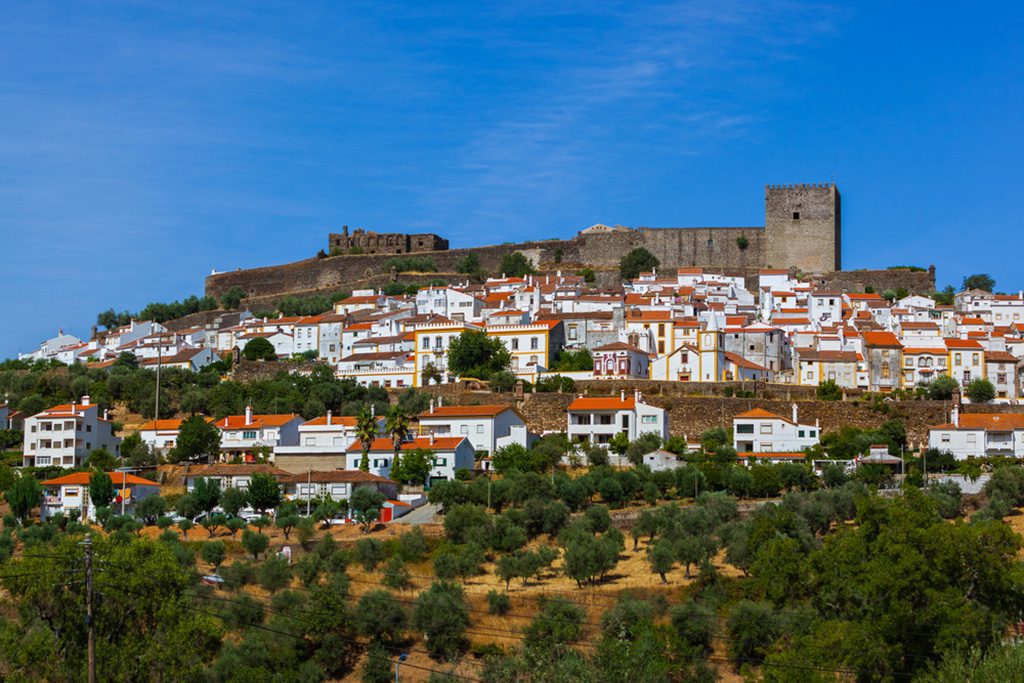
The charming old town of Castelo De Vide in Portugal. Image source: Tatiana Popova/Shutterstock.com
Located in the exact middle of Portugal’s eastern border with Spain is the castle of Castelo de Vide. This very small town has a population of under 4000 people. The pleasant mineral water that has been piped into several small fountains in the town is one of the few attractions, in addition to the town’s medieval castle. Here, time seems to stand still. Children kicking soccer balls along narrow streets, men playing cards outside cafés, and ladies chatting and crocheting on front steps: all this and more awaits you when you rise early. The city’s vantage point from atop the hill will wow you as well.
6. Tavira
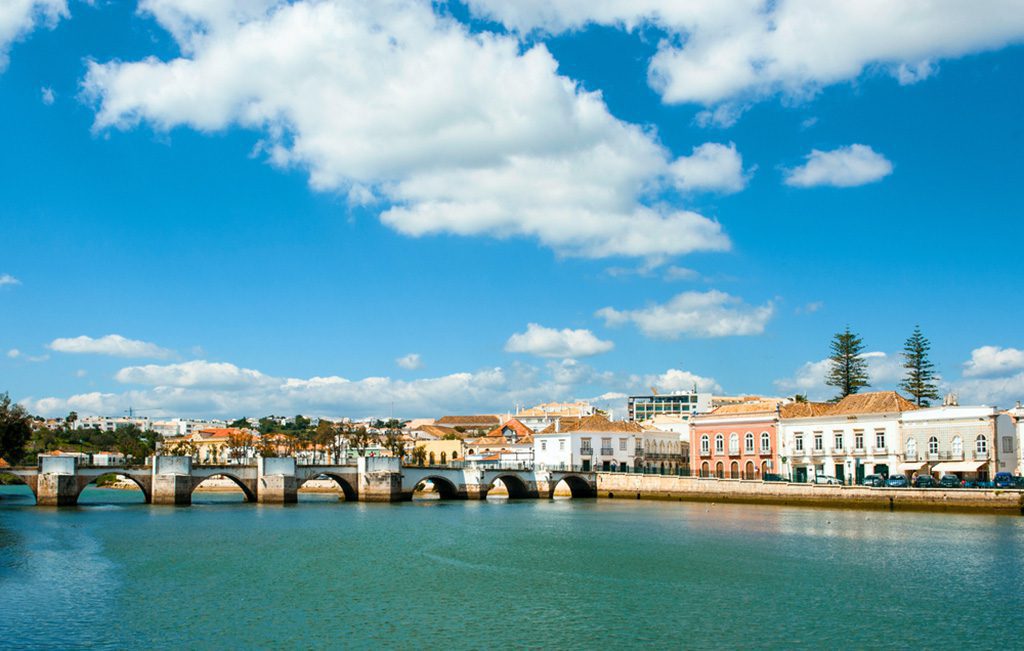
A historic Roman bridge in Tavira, Algarve, Portugal. Image source: tilialucida/Shutterstock.com
Tavira, located on the southern coast of the Algarve, has been there since the Bronze Age, despite being just two miles from the ocean. Tavira, a city that is split in half by the Rio Gilo river, is a walker’s paradise. Winding lanes of cobblestone lead to a castle perched high above the city, through a picturesque Roman bridge, and on to a plethora of Gothic and Renaissance-style churches. The city is about two miles from the beautiful sand beaches of Ilha de Tavira, and it has a contemporary riverside market where fishermen sell their daily catches.
5. Obidos
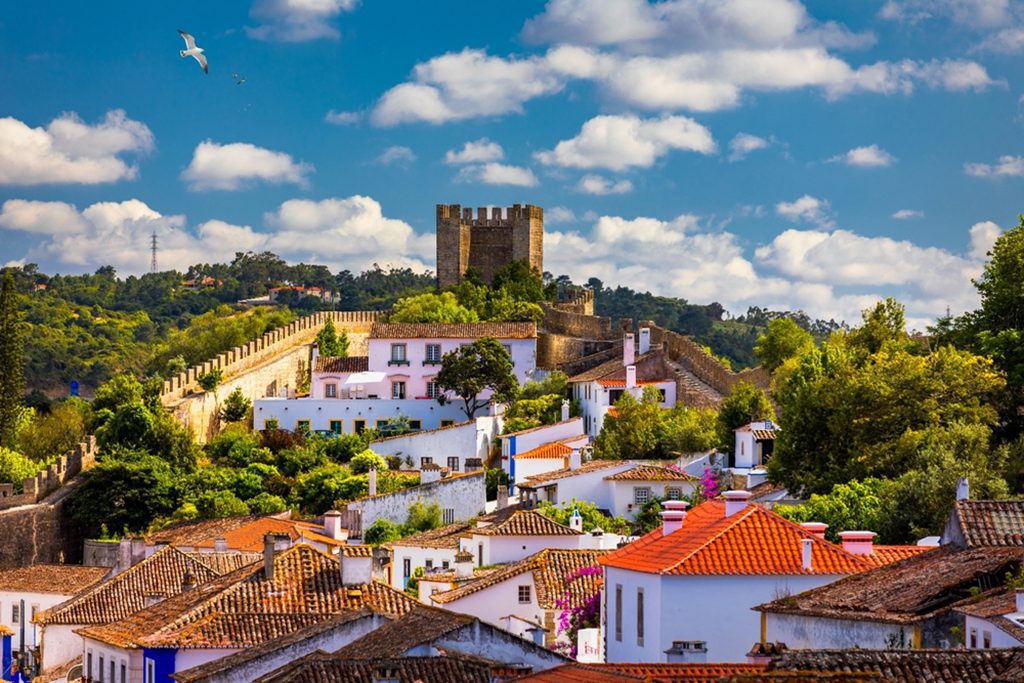
A stonewalled city with a medieval fortress in Obidos, Portugal. Image source: DaLiu/Shutterstock.com
Thousands of visitors flock to Obidos every year to experience its lost-in-time atmosphere and attend one of the town’s many festivals. An authentic Portuguese town getaway could be hard to come by in this busy area. But the allure of the castle’s crenellated wall can be too much to ignore. There are several restaurants, stores, and pubs within the castle, as well as many huge white residences connected by narrow cobblestone streets. The castle on the hilltop has been renovated into a five-star hotel catering to tourists in search of both a great view and a relaxing stay.
4. Monsanto
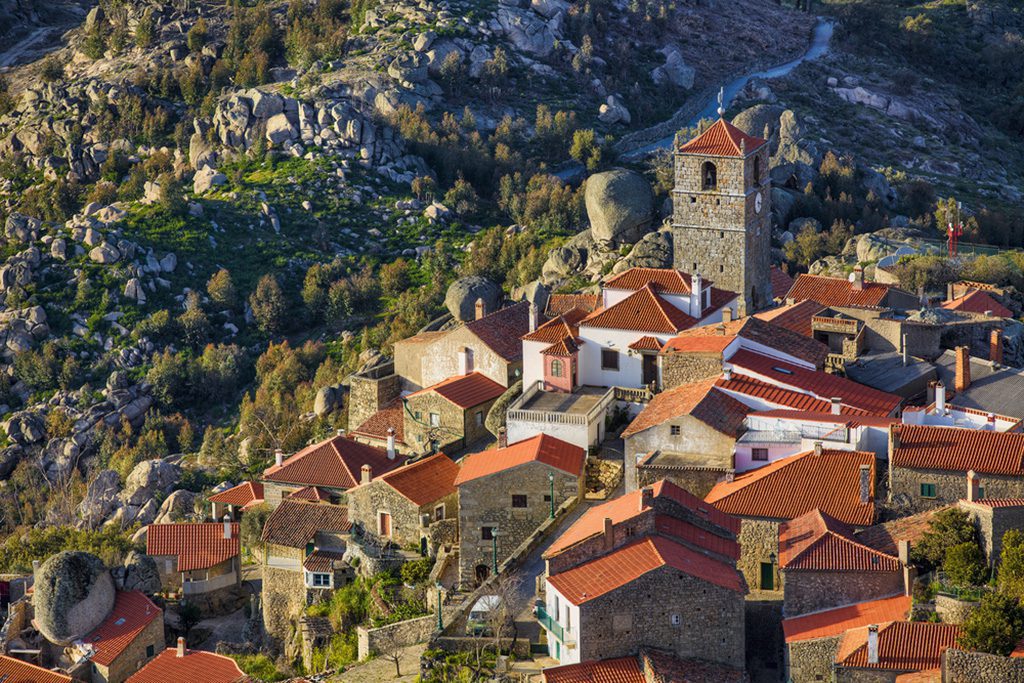
A breathtaking view of the picturesque village of Monsanto in Portugal. Image source: Rolf E. Staerk/Shutterstock.com
A hill in central Portugal looks like it was showered with 200-ton boulders. Houses and other structures belonging to Monsanto can be found tucked in among the boulders. There are less than 1,000 permanent inhabitants that rely on donkeys as a means of transportation. The boulders are used as walls, floors, and even roofs, demonstrating the creativity of the locals. One residence is even carved out of the side of the town’s biggest rock. This one-of-a-kind city, dubbed “the most Portuguese town in Portugal,” is not to be missed by anybody traveling through the country’s geographic heart.
3. Marvao
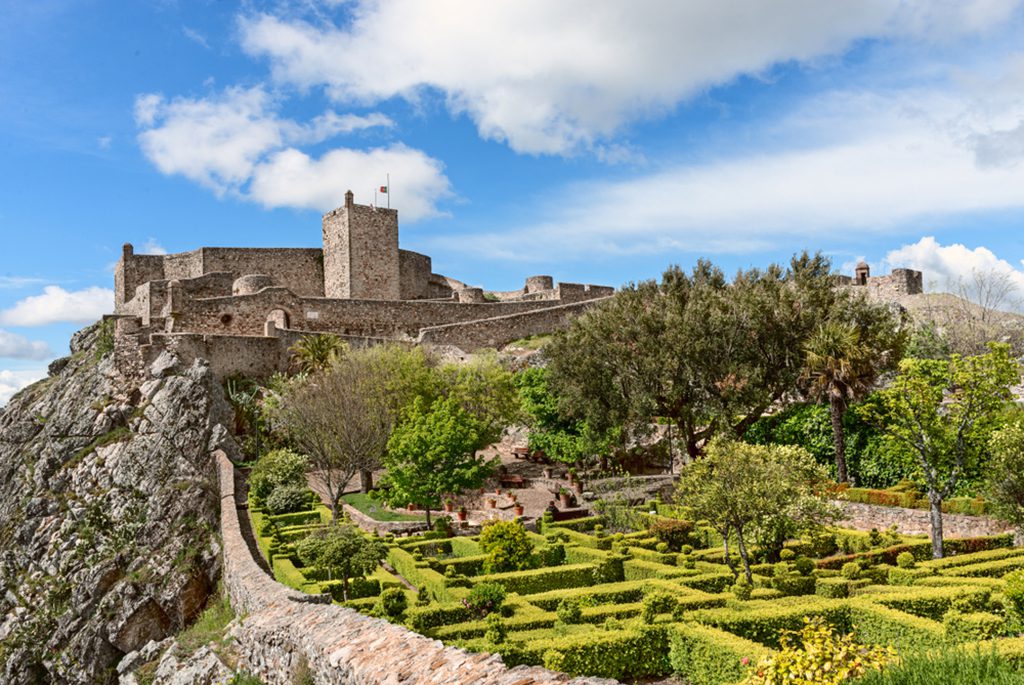
A panoramic view of the medieval castle and gardens in Marvao, Portugal. Image source: Fotoeventis/Shutterstock.com
Situated on a hilltop to the south of Almeida is the town of Marvao. There’s no place for wimps in this community of under 5,000 people. The town’s winding, old streets were cut into a cliff face. Marvao’s houses are colorful and flower-filled. Amazing panoramic vistas of Portugal’s eastern landscapes await you. The town is protected by a castle, yet its historic structures have survived without significant damage due to siege or battle. Guests hoping for a unique experience are drawn to the inn’s few private rooms.
2. Tomar
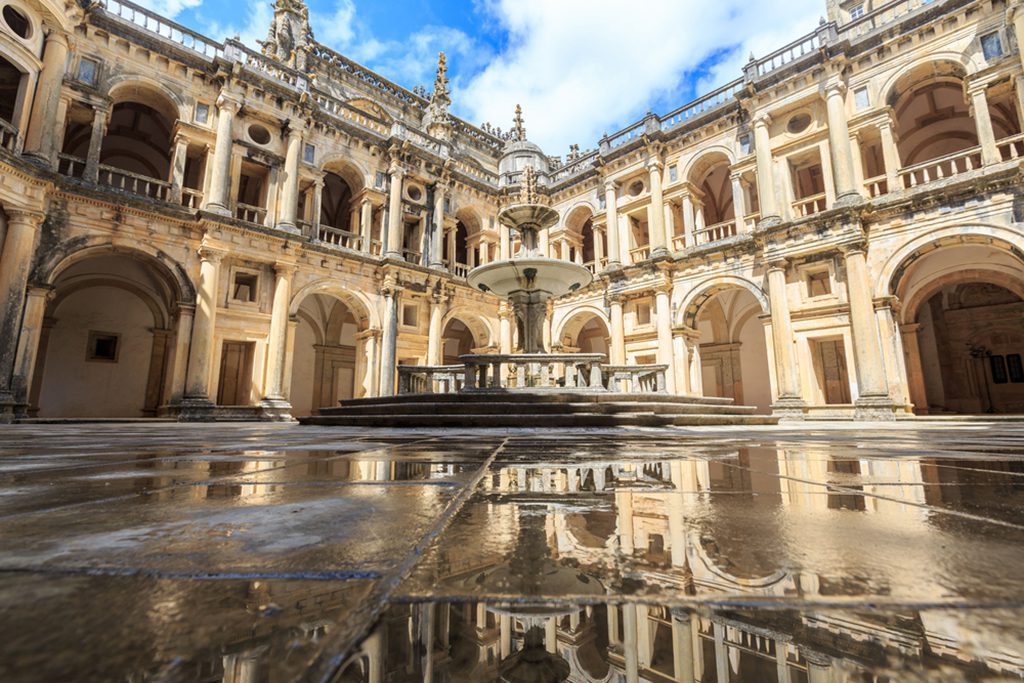
A close-up view of the Knights Templar Castle in Tomar, Portugal. Image source: Pigprox/Shutterstock.com
Founded by Pope Clement I, the Knights Templar were a military order dedicated to the Catholic faith. During the Crusades, they were some of the most capable warriors, and even their non-combatant members were financially sophisticated. Once residing in Tomar, they dominated Christendom throughout the 12th and 14th centuries. The Convento de Christo, the soaring former residence of the Knights, still stands as a crowning historical achievement in this picturesque town that is nestled against the Sete Montes Woods. Visit the Almourol Castle and the medieval synagogue on a historical walking tour before snacking on some Fatias de Tomar, a delicious bread snack that has been manufactured in this town for generations.
1. Monsaraz
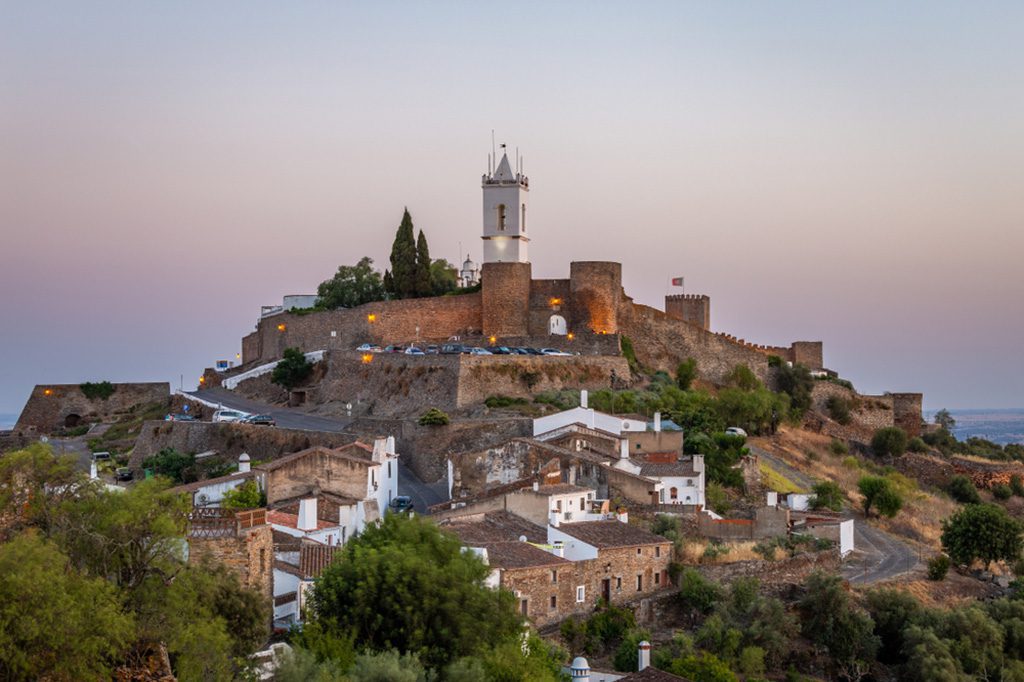
A stunning sunset view of Monsaraz village in Alqueva, Portugal. Image source: Gi Cristovao Photography/Shutterstock.com
On the outskirts of Monsaraz, one of the oldest settlements in southern Portugal, prehistoric megalithic monuments tower like a foreboding Stonehenge. The castle of Monsaraz, like many border towns between Spain and Portugal, was strategically located on a hill. It has been governed by Moors, Christians, and Templar Knights, and each group has left its own unique cultural imprint on the castle. The town’s main attractions presently are Alentejan food and tourists. In this tranquil, genuine Portuguese town, the streets are narrow and wind past crooked cottages.


